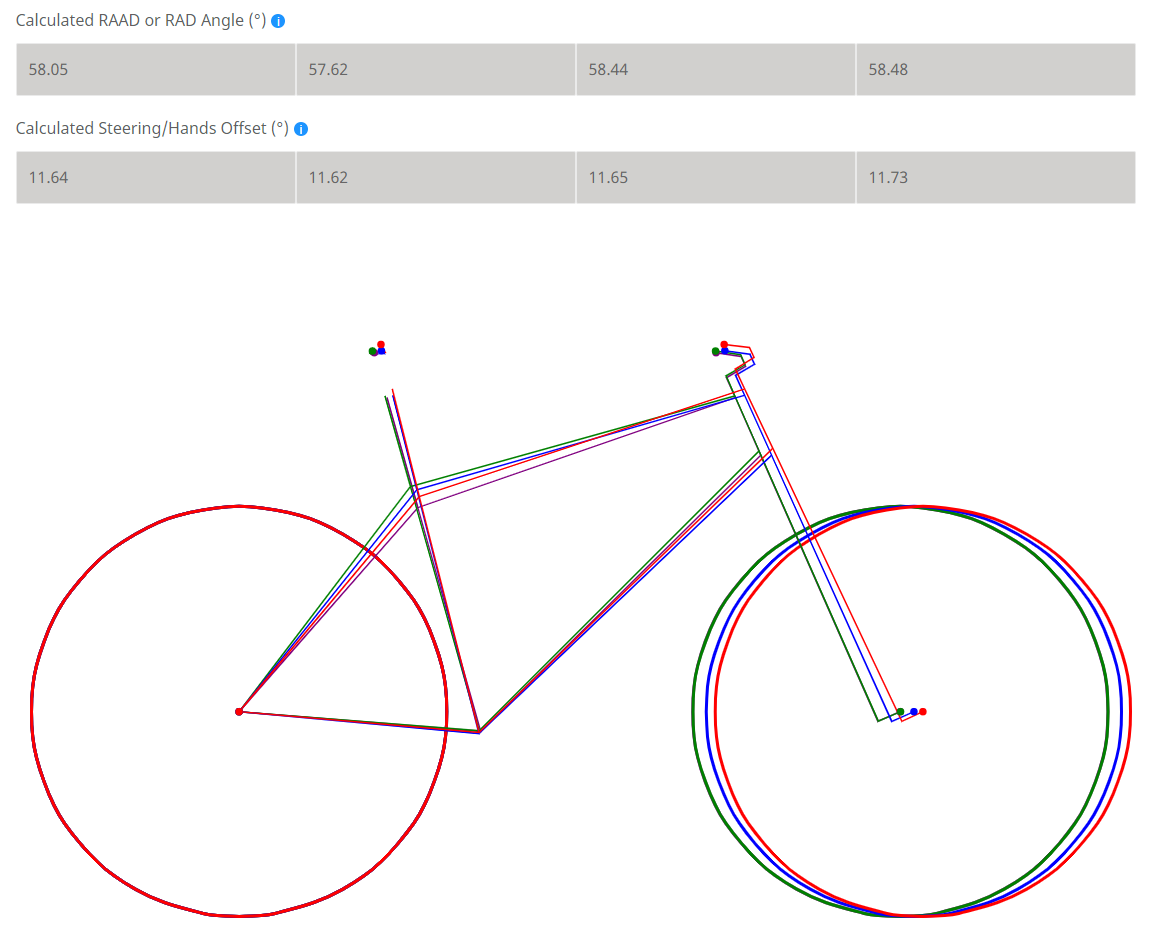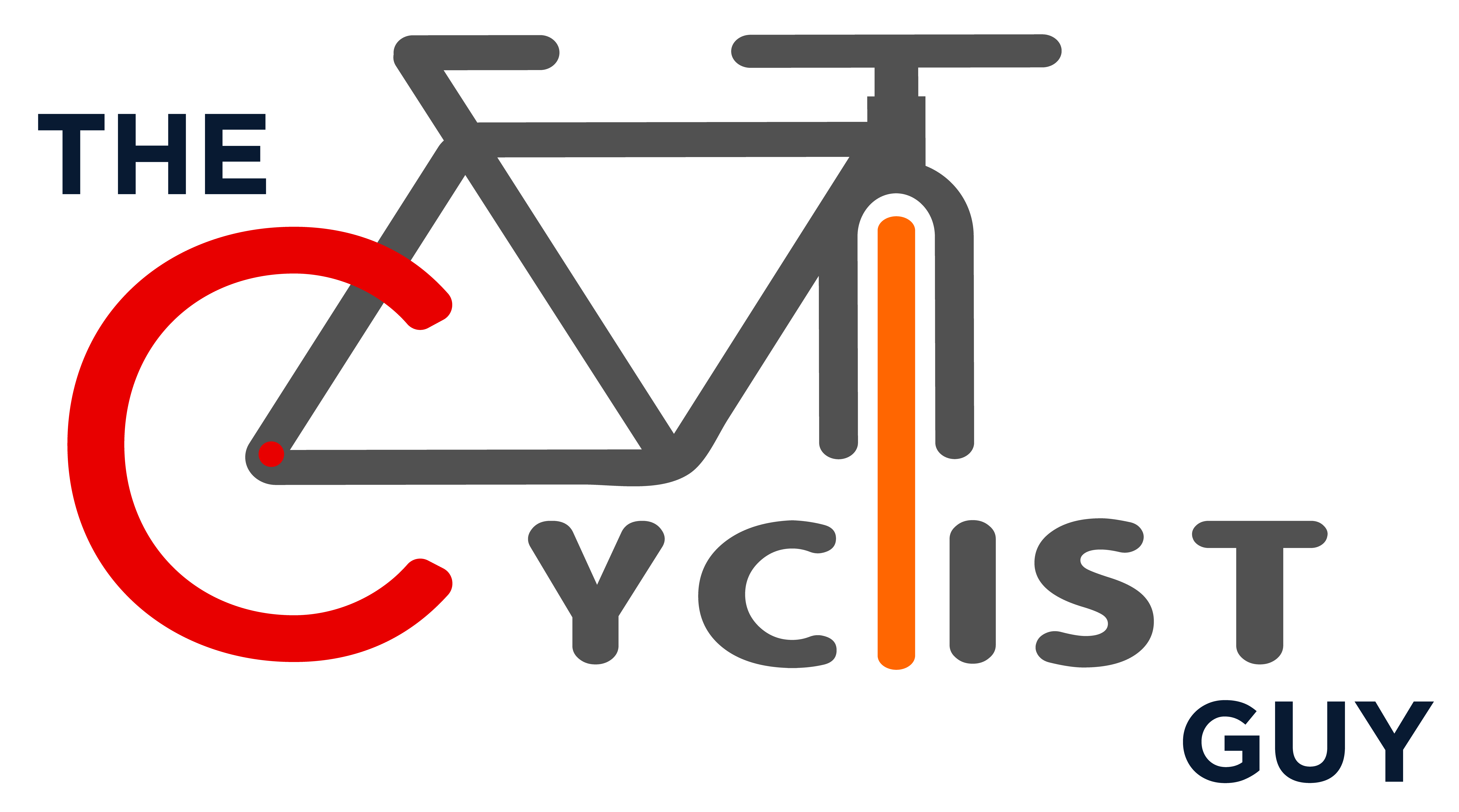Bicycle Geometry Compare! Choosing the right bicycle can be a challenge. Bicycle geometry plays a key role in this decision.
Understanding bicycle geometry helps you find a bike that fits well and rides comfortably. From commuting to mountain biking, geometry affects your performance and comfort. It includes factors like frame shape, angles, and lengths. Each aspect influences how the bike handles and feels.
Whether you’re racing or cruising, knowing the differences can guide you. This comparison will explore key elements of bicycle geometry. It will help you make an informed choice. Let’s dive in to see what makes each bike unique.
Introduction To Bicycle Geometry
Bicycle geometry is the study of how the parts of a bicycle fit together. This affects how the bike handles and feels. Understanding bicycle geometry helps in choosing the right bike. A good fit means a comfortable and efficient ride. Let’s explore the basics of bicycle geometry.
Importance Of Geometry
Bicycle geometry impacts your riding experience in many ways. A bike’s geometry determines its performance. Whether for racing, commuting, or mountain biking, each bike has different geometry. Here are some key points:
- Comfort: Proper geometry ensures a comfortable ride.
- Handling: Influences how the bike steers and balances.
- Efficiency: Good geometry can make pedaling easier.
- Safety: Proper fit reduces the risk of injury.
Consider these when choosing a bike. For example, a road bike with a steep head tube angle is good for quick turns. On the other hand, a mountain bike with a slack head tube angle is better for stability on rough terrain. Each type has its own geometry to suit its purpose. A proper fit can also prevent back and neck pain.
Key Terms To Know
Understanding some key terms in bicycle geometry can help. Here are a few important ones:
| Term | Definition |
|---|---|
| Head Tube Angle | The angle of the front fork. Affects steering and stability. |
| Seat Tube Angle | The angle of the seat tube. Influences comfort and pedaling efficiency. |
| Wheelbase | The distance between the front and rear wheels. A longer wheelbase provides more stability. |
| Reach | The horizontal distance from the bottom bracket to the head tube. Affects the rider’s position. |
| Stack | The vertical distance from the bottom bracket to the head tube. Impacts the height of the handlebars. |
Knowing these terms can help you understand bike reviews and specifications. This knowledge will assist in making informed decisions. The right geometry can enhance your biking experience. Always consider these factors when choosing a bike.

Credit: weightweenies.starbike.com
Types Of Bicycle Geometry
Bicycle geometry refers to the angles and lengths of the various parts of the bicycle frame. These measurements affect how the bike handles, feels, and performs. Different types of bicycles have unique geometries that suit their specific purpose. Understanding these differences can help you choose the right bike for your needs. This post will explore the geometries of road bikes, mountain bikes, and hybrid bikes.
Road Bikes
Road bikes are designed for speed and efficiency on paved surfaces. They have a steep head tube angle and a short wheelbase. This makes them very responsive. The seat tube angle is also steep. This positions the rider over the pedals for efficient power transfer.
Key features of road bike geometry:
- Steep head tube angle: Typically 72-74 degrees.
- Short wheelbase: Less than 1000mm.
- Narrow handlebars: For aerodynamic positioning.
- High bottom bracket: Provides better clearance.
Road bikes are great for racing and long-distance rides on smooth roads. They are not as comfortable on rough terrain due to their rigid frames and narrow tires.
Mountain Bikes
Mountain bikes are designed for off-road trails. They have a slack head tube angle and a long wheelbase. This makes them stable on rough terrain. The seat tube angle is more relaxed. This allows for better control on descents.
Key features of mountain bike geometry:
- Slack head tube angle: Typically 65-70 degrees.
- Long wheelbase: More than 1100mm.
- Wide handlebars: For better control.
- Low bottom bracket: Provides stability.
Mountain bikes often have suspension systems. These systems absorb shocks from rough terrain. They are perfect for trails, but not as efficient on paved roads.
Hybrid Bikes
Hybrid bikes combine features of road and mountain bikes. They offer a balance between comfort and efficiency. The head tube angle is moderate and the wheelbase is mid-range. This provides a good mix of stability and responsiveness.
Key features of hybrid bike geometry:
- Moderate head tube angle: Typically 70-72 degrees.
- Mid-range wheelbase: Around 1050mm.
- Medium-width handlebars: For versatility.
- Medium bottom bracket height: Offers a balance of clearance and stability.
Hybrid bikes are versatile. They are suitable for commuting, fitness rides, and light off-road use. They are not as specialized as road or mountain bikes, but they offer a good compromise for general use.
Frame Angles Explained
Bicycle geometry plays a vital role in the performance and comfort of a bike. Understanding the different angles of the frame helps in choosing the right bicycle for your needs. This blog post will focus on the important frame angles and how they affect your ride.
Head Tube Angle
The head tube angle is a crucial aspect of bicycle geometry. It determines how the bike handles and steers. A steeper head tube angle means the bike is more responsive and nimble. This is ideal for road bikes and racing bikes.
A slacker head tube angle, on the other hand, makes the bike more stable. This is better for mountain bikes and bikes used for downhill riding. The head tube angle typically ranges between 70 to 74 degrees. Here is a comparison:
| Type of Bike | Head Tube Angle | Characteristics |
|---|---|---|
| Road Bike | 72-74 degrees | Quick steering, responsive handling |
| Mountain Bike | 70-72 degrees | Stable, easy to control on rough terrain |
| Downhill Bike | 65-70 degrees | Very stable, designed for steep descents |
Choosing the right head tube angle depends on your riding style and the terrain you ride on. For faster rides on smooth roads, a steeper angle is better. For rough terrains and downhill rides, a slacker angle provides more control.
Seat Tube Angle
The seat tube angle is another important frame angle. It affects your pedaling efficiency and comfort. The seat tube angle is the angle between the seat tube and the ground. A steeper seat tube angle positions the rider more forward. This is beneficial for aggressive pedaling and sprinting.
A slacker seat tube angle places the rider further back. This is more comfortable for long-distance riding and climbing. The typical seat tube angle ranges from 72 to 75 degrees. Here is a comparison:
| Type of Bike | Seat Tube Angle | Characteristics |
|---|---|---|
| Road Bike | 73-75 degrees | Aggressive positioning, efficient pedaling |
| Mountain Bike | 72-74 degrees | Balanced for climbing and descending |
| Touring Bike | 70-73 degrees | Comfortable for long rides, stable |
Choosing the right seat tube angle is essential for a comfortable and efficient ride. For racing or fast rides, a steeper angle is better. For long-distance or recreational rides, a slacker angle provides more comfort.
Wheelbase And Stability
Bicycle geometry plays a crucial role in how a bike handles and performs. One key aspect of bicycle geometry is the wheelbase. Wheelbase is the distance between the front and rear axles of a bicycle. It affects the bike’s stability, handling, and comfort. Understanding the differences between a long and short wheelbase can help you choose the right bike for your needs.
Long Vs. Short Wheelbase
A long wheelbase generally provides more stability. This is because the distance between the axles is greater, which helps in maintaining balance, especially at high speeds. Bikes with long wheelbases are often preferred for touring and long-distance rides. They offer a smoother ride and can handle rough terrains better.
Key benefits of a long wheelbase:
- Increased stability
- Smoother ride
- Better for long-distance travel
On the other hand, a short wheelbase makes a bicycle more responsive and agile. This is because the shorter distance between axles allows for quicker turns and better maneuverability. Bikes with short wheelbases are often used for racing and city commuting. They are easier to handle in tight spaces.
Key benefits of a short wheelbase:
- More responsive
- Better maneuverability
- Ideal for racing and commuting
Impact On Handling
The wheelbase length has a significant impact on how a bike handles. A long wheelbase makes a bike more stable. This is especially noticeable when riding at high speeds or on rough terrains. The bike feels more planted and less likely to wobble.
However, the increased stability comes at the cost of reduced agility. Bikes with long wheelbases are not as easy to turn quickly. They require more effort to navigate through tight spaces. This can be a disadvantage in city riding or racing scenarios.
In contrast, a short wheelbase offers quick and sharp handling. The bike responds faster to steering inputs, making it easier to dodge obstacles or make quick turns. This is why racing bikes often have shorter wheelbases.
Comparison Table:
| Aspect | Long Wheelbase | Short Wheelbase |
|---|---|---|
| Stability | High | Moderate |
| Agility | Low | High |
| Ride Comfort | Smooth | Responsive |
| Ideal Use | Touring, Long-distance | Racing, Commuting |
Top Tube Length
Bicycle geometry is a critical aspect that affects both performance and comfort. The top tube length is a vital measurement in bicycle geometry. It impacts how a bicycle handles and how comfortable it is for the rider. Understanding the importance of top tube length helps you choose the right bike for your needs.
Effect On Reach
The top tube length has a significant impact on the reach of the bicycle. Reach is the horizontal distance from the bottom bracket to the top of the head tube. A longer top tube results in a longer reach. This impacts the rider’s position on the bike. Here are some key points:
- A longer reach stretches the rider’s position.
- This can improve stability at higher speeds.
- It is ideal for aggressive, performance-oriented riding.
A shorter top tube results in a shorter reach. This makes the riding position more upright. It is more suitable for relaxed, leisurely rides. The choice between a longer and shorter reach depends on the type of cycling you prefer.
Rider Comfort
The top tube length also plays a crucial role in rider comfort. Comfort can vary greatly depending on the rider’s body dimensions and riding style. Here are some considerations:
- Longer top tube:
- May cause strain on the back and neck.
- Better for riders with longer torsos.
- Shorter top tube:
- Provides an upright position.
- Reduces pressure on the wrists and shoulders.
Finding the right top tube length can make a significant difference. It can ensure a comfortable ride, free from unnecessary strain. Always consider your body measurements and comfort preferences when selecting a bike.

Credit: www.reddit.com
Stack And Reach Measurements
Understanding bicycle geometry is essential for choosing the right bike. It determines how comfortable and efficient your ride will be. One key aspect of bicycle geometry is stack and reach measurements. These measurements influence how well a bike fits you. They affect your riding posture and comfort level.
Importance For Fit
Stack and reach measurements are crucial for finding the right bike size. Stack measures the vertical distance from the center of the bottom bracket to the top of the head tube. Reach measures the horizontal distance from the same points. Together, they define the bike’s fit and feel.
Here’s why stack and reach are important:
- Comfort: Proper measurements ensure you are not too stretched out or cramped.
- Efficiency: A good fit helps you pedal more efficiently.
- Control: The right fit gives you better control over your bike.
Choosing a bike with the right stack and reach can prevent discomfort and injuries. It helps in maintaining a neutral spine position. This is especially important for long rides. A poor fit can lead to back pain, neck strain, and other issues.
Comparing Different Models
Different bike models have varied stack and reach measurements. This makes some bikes more suitable for certain types of riders. For example, a racing bike might have a longer reach and lower stack. This promotes a more aerodynamic position. A touring bike might have a higher stack and shorter reach. This ensures a more upright and comfortable riding posture.
Here’s a comparison of stack and reach for different bike models:
| Bike Model | Stack (mm) | Reach (mm) |
|---|---|---|
| Racing Bike | 540 | 400 |
| Mountain Bike | 600 | 420 |
| Touring Bike | 620 | 380 |
As seen in the table, different bikes cater to different riding styles. It’s important to measure yourself and compare these values. This ensures you get a bike that fits your body and riding needs.
Geometry Comparisons
Bicycle geometry affects how a bike feels and performs. Understanding these differences helps in choosing the right bike. Geometry comparisons consider frame angles, lengths, and other measures. This guide compares various aspects of bicycle geometry.
Brand A Vs. Brand B
Brand A and Brand B have different geometries. These differences influence riding style and comfort. Let’s look at some key geometry aspects:
| Feature | Brand A | Brand B |
|---|---|---|
| Head Tube Angle | 72 degrees | 74 degrees |
| Seat Tube Angle | 74 degrees | 73 degrees |
| Chainstay Length | 420 mm | 430 mm |
Head tube angles affect steering. Brand A has a more relaxed angle. This is better for stability. Brand B’s steeper angle is good for quick turns.
Seat tube angles impact pedaling. Brand A’s steeper angle supports aggressive riding. Brand B’s angle is better for comfort.
Chainstay length affects the bike’s agility. Brand A has shorter chainstays. This makes it more nimble. Brand B’s longer chainstays provide better stability.
Custom Vs. Stock Frames
Choosing between custom and stock frames depends on needs. Custom frames are tailored to fit perfectly. Stock frames are pre-made and come in standard sizes.
Custom frames offer several benefits:
- Perfect fit for your body
- Choice of materials
- Unique design options
Stock frames are widely available. They are often less expensive. They also come in various sizes to fit most riders.
Custom frames can be a great choice for serious cyclists. Stock frames are more accessible for casual riders. Both have their advantages. Consider your riding style and needs before deciding.
Choosing The Right Geometry
Understanding bicycle geometry is crucial for selecting the right bike. The geometry affects comfort, control, and performance. Choosing the right geometry depends on various factors. These include your riding style and the terrain you plan to ride on.
Riding Style Considerations
Your riding style plays a significant role in choosing the right bicycle geometry. Different styles demand different geometries for optimal performance and comfort.
Here are some common riding styles and their recommended geometries:
- Road Cycling: Requires a more aggressive, aerodynamic position. Look for a bike with a longer top tube and shorter head tube.
- Mountain Biking: Needs a bike that can handle rough terrains. Opt for a slacker head angle and longer wheelbase.
- Commuting: Focuses on comfort and ease of handling. Choose a bike with an upright position and shorter reach.
- Touring: Involves long-distance rides with gear. A stable geometry with a longer wheelbase and relaxed angles is ideal.
Each style has specific needs. Selecting the right geometry will enhance your riding experience. It ensures you can ride longer and more comfortably.
Terrain Impact
The terrain you ride on also influences your bike’s geometry. Different terrains require different features for better control and comfort.
Consider these terrain types and their impact on bike geometry:
| Terrain Type | Recommended Geometry |
|---|---|
| Flat Roads | Opt for a bike with a steeper head angle. This offers quick steering and efficient power transfer. |
| Mountain Trails | Choose a bike with a slacker head angle and longer wheelbase. This provides stability and better handling on rough terrain. |
| Hilly Roads | A bike with a lower bottom bracket and shorter chainstays is ideal. This combination offers better climbing and descending capabilities. |
Matching your bike’s geometry with the terrain ensures a smoother, safer ride. It enhances your control and reduces fatigue.
Future Of Bicycle Geometry
Bicycle geometry has changed a lot over the years. These changes have made bikes faster, safer, and more fun to ride. The future of bicycle geometry looks bright. Engineers and designers are always trying new ideas. They want to make bicycles even better.
Trends In Design
Design trends in bicycle geometry are always evolving. Longer wheelbases are becoming more common. This makes bikes more stable at high speeds. Slack head angles are also popular. They help with steering and control on rough terrains.
Many new designs also focus on comfort. Shorter chainstays make bikes easier to handle. Lower bottom brackets help with balance. These changes are great for both casual riders and serious cyclists.
Here are some key trends:
- Longer wheelbases for stability
- Slack head angles for better control
- Shorter chainstays for easier handling
- Lower bottom brackets for improved balance
Technological Advances
Technology plays a big role in bicycle geometry. 3D printing is one of the latest advances. It allows for custom bike frames. This means each bike can be made to fit the rider perfectly. Carbon fiber is another important material. It is strong but very light. This helps in making bikes faster and easier to handle.
Smart sensors are also making a difference. These sensors can monitor the bike’s performance. They provide data on speed, distance, and even rider posture. This information helps riders improve their skills. It also helps designers make better bikes.
Key technological advances include:
- 3D printing for custom frames
- Carbon fiber for lightweight strength
- Smart sensors for performance monitoring

Credit: madscientistmtb.com
Frequently Asked Questions
What Is Bicycle Geometry?
Bicycle geometry refers to the measurements and angles of a bike’s frame. It affects handling, comfort, and performance.
How Does Geometry Affect Bike Handling?
Bike geometry influences steering responsiveness and stability. Different geometries suit various riding styles, like racing or mountain biking.
What Is The Head Tube Angle?
The head tube angle is the angle of the front fork. It affects steering and stability.
Why Is The Wheelbase Important?
The wheelbase is the distance between the front and rear axles. It impacts stability and maneuverability.
Conclusion
Understanding bicycle geometry helps in choosing the right bike. Each component affects comfort and performance. Compare key elements like frame size, wheelbase, and angle. This knowledge ensures better riding experiences. Make informed decisions when purchasing your next bicycle. Enjoy smoother rides and improved handling.
Stay confident on various terrains. Happy cycling!

Steven is a professional cyclist and his passion is cycling. He has been cycling for the last 6 years and he loves using bikes while outing as well. Based on his experiences with the different types of bikes; he is sharing his opinions about various bikes so that a beginner can start right away. Find him on Twitter @thecyclistguy Happy Biking.


Leave a Reply